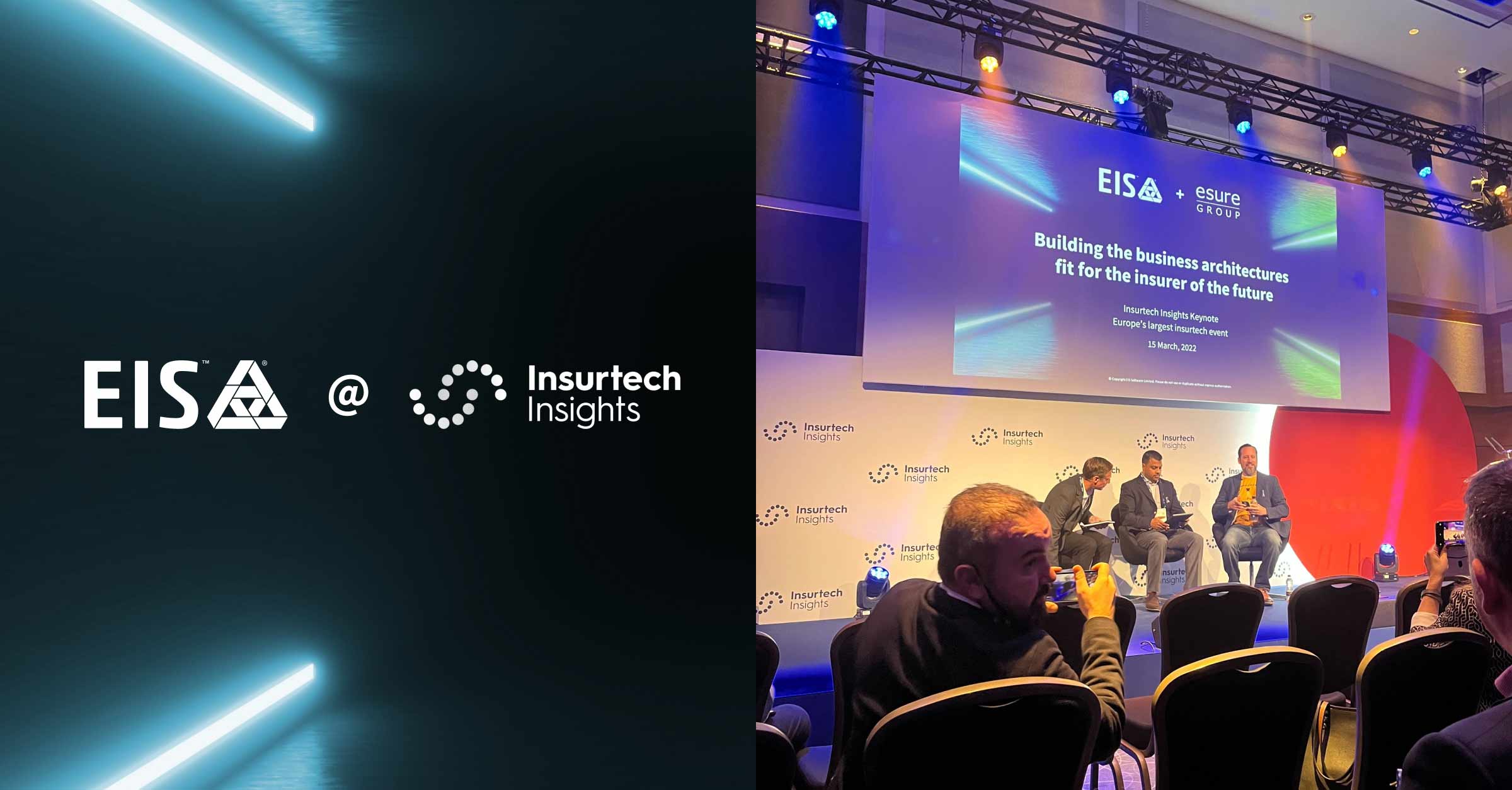Our key takeaways and observations from Insurtech Insights Europe.
We have heard that insurance is at a tipping point before. And it reminds a lot of us of “the year of mobile,” which was massively over forecasted. Having said that, the feeling on the floor at Insuretech Insights Europe is that we could well be nearing this point of change. And there’s a lot in play, with core technologies, insurtechs and venturing partners all coming together to enable insurers to transform differently.
Most insurers we have spoken to are driving towards a major transformation, and they are at various stages along this journey. However, all are very focused on trying to make sure this next wave is genuinely a game changing one. The pressure feels high, and the active people now behind technology-driven transformation come from across the board. This is no longer just the custody of the CIO or CTO, and, crucially, shareholders or investors appear to be watching evermore eagerly. The driver for this feels like it’s very multi-faceted, and this is fairly unique.
Here’s a few of the themes coming off the floor:
1. Customer experience in insurance is still a major battleground: With relatively low touch points, a need to make every moment count and a rising sense of expectation from customers, customer experience is a critical point of differentiation for insurers. Having said that, the key to great experiences and forming deeper relationships is data, driving personalised experiences that really help the customer at each interaction point. And currently this level of data fluidity and ability to act on each point of insight appears to be distinctly lacking. This is one of the reasons why we have built our platform around the customer, EIS CustomerCore and DXP being fundamental to make every possible event count.
2. ROI, specifically return on innovation, is critical: The era of experimentation and endless PoCs feels like it is coming to an end. Things need to get real now, and innovation is only achieved when it’s in the hands of customers. The barriers being communicated are varied, but the underlying issue of “making it real” feels like it’s having a stifling impact on otherwise successful discoveries or proof points, with a lot of people still feeling like they have been proving similar things in different ways over and over again. However, listening to the main stage sessions, it’s also true that a lot of the senior executives are driving change in this space and ensuring that innovation is integral to their businesses. At our roundtable tomorrow chaired by Stephen Yap, we’ll look further into this topic with some outstanding industry executives, which looks set to be really interesting.
3. “Ecosystem” is an overused insurance buzzword and a clear goal for transformations: Insurers want to partner more, explore more in venture models and generally look to solve some of the deep issues on the horizon and there is a realization that this needs to be done in collaboration. And it’s equally clear that this is going to be about an enterprise design shift and a technology change as well. There’s an underlying need to be able to react fast to opportunities, and adapt their core services to embrace changing customer behaviour and remove risks from people’s lives and businesses. To do this, there’s a need to “re-engineer” their business and technology architecture, and change product, processes and ultimately their purpose. When asked several times “what’s the key point of difference between EIS and other similar enabling platforms,” it’s clear that we have built ours around the customer, a vital difference in how ecosystem businesses operate and key to the agility and speed we provide to our customers.
4. Evolution not revolution: There’s still a need to move in stages, specifically tackling key lines of products or geographies in priority order, but an equally keen desire to make sure that wherever their investment goes, it’s in a platform or set of technologies that can easily move across product lines and geographies as well. This is the vital difference in new approaches to engineering coretech, building the underlying foundation differently. It’s born in the cloud, adaptive and hassle free (technology and software upgrades at low to no impact) and has a different structure to product and customer interaction.
5. Insurance gets cool: It feels like insurance has always felt slightly out of place, tarnished with a similar relatability to other FS businesses and often seen as slow: an old industry. With most customers over the years telling me in interviews and focus groups that they’ve seen very little difference in their relationships or feelings towards insurers, it now feels like insurers are realising how important they actually are to people, society and economies, and vitally, they make businesses happen. Insurers need to be bolder, with braver communication, telling customers about what it actually means to be their insurer, and how the magic happens. At Insuretech Insights, it feels like insurance is clearing its throat, ready to shout louder, and we at EIS are definitely here for that. The more we can be clearer about the ambition insurers have, the more we can come together to make it happen.
These five points aren’t necessarily new, but there’s a clarity of thought and direction now, and that’s key to driving through a tipping point. We’re jumping through a relative economic stall zone between what was the experience economy to what likely will be a planet-first and ecosystem-based world, and the new ecosystems will be accelerated by AI, ML & RPA but underpinned by core technology. We’re enabling true ecosystems to emerge, and with it, a new competitive paradigm that will inevitably have winners and losers, but importantly, the customer will win out regardless. We’re really excited to be in this industry and play a key role in this next wave of transformation.
Everyone at EIS is looking forward to day 2 of Insurtech Insights Europe . Read more of our insurtech insights here.




